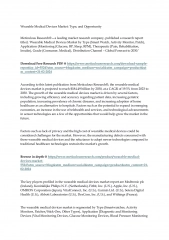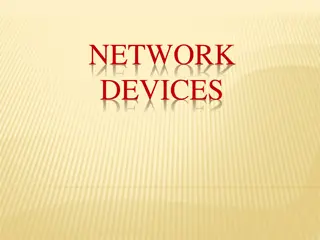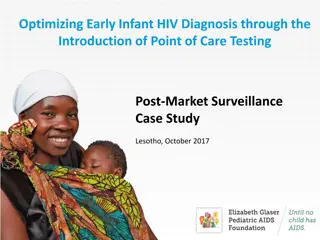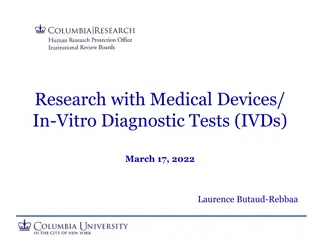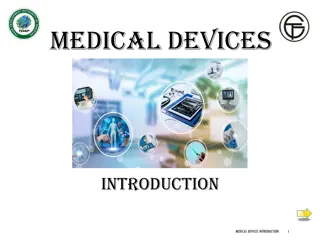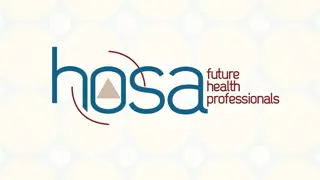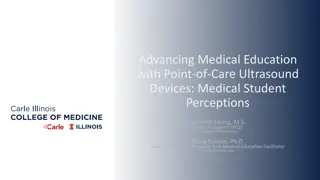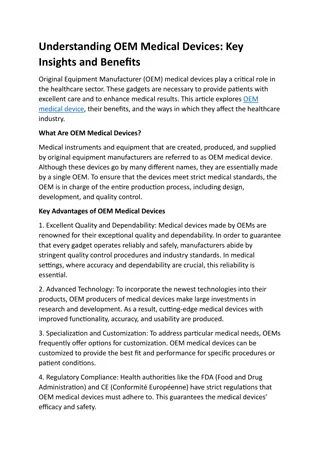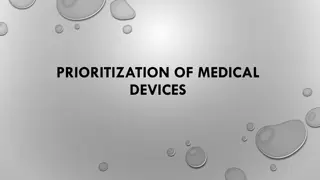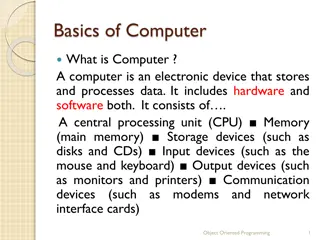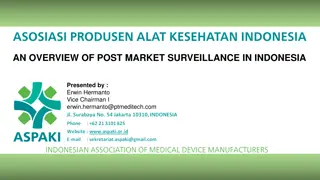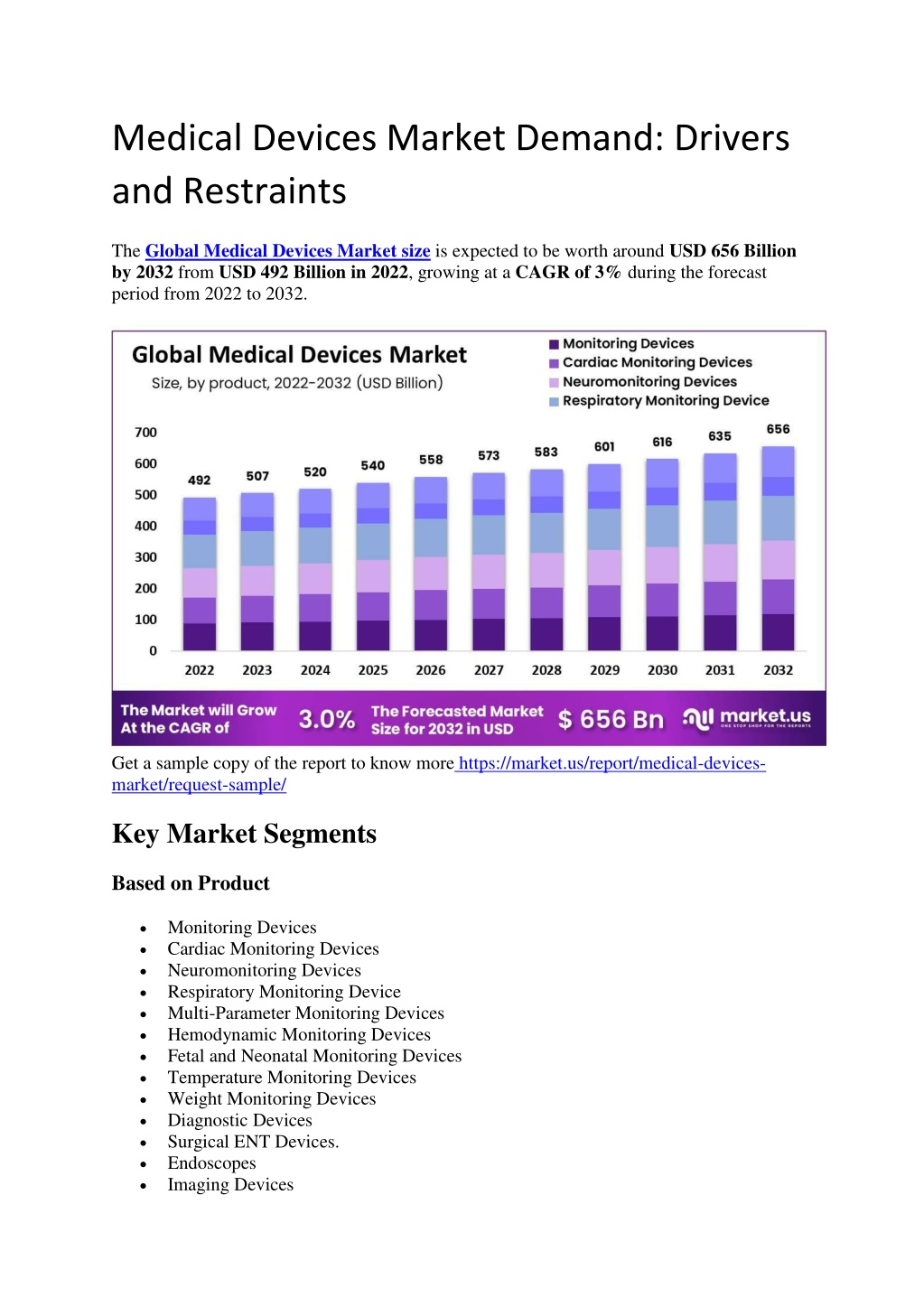
Medical Devices Market
Theu00a0Global Medical Devices Market sizeu00a0is expected to be worth aroundu00a0USD 656 Billion by 2032u00a0fromu00a0USD 492 Billion in 2022, growing at au00a0CAGR of 3%u00a0during the forecast period from 2022 to 2032.
Download Presentation

Please find below an Image/Link to download the presentation.
The content on the website is provided AS IS for your information and personal use only. It may not be sold, licensed, or shared on other websites without obtaining consent from the author. If you encounter any issues during the download, it is possible that the publisher has removed the file from their server.
You are allowed to download the files provided on this website for personal or commercial use, subject to the condition that they are used lawfully. All files are the property of their respective owners.
The content on the website is provided AS IS for your information and personal use only. It may not be sold, licensed, or shared on other websites without obtaining consent from the author.
E N D
Presentation Transcript
Medical Devices Market Demand: Drivers and Restraints The Global Medical Devices Market size is expected to be worth around USD 656 Billion by 2032 from USD 492 Billion in 2022, growing at a CAGR of 3% during the forecast period from 2022 to 2032. Get a sample copy of the report to know more https://market.us/report/medical-devices- market/request-sample/ Key Market Segments Based on Product Monitoring Devices Cardiac Monitoring Devices Neuromonitoring Devices Respiratory Monitoring Device Multi-Parameter Monitoring Devices Hemodynamic Monitoring Devices Fetal and Neonatal Monitoring Devices Temperature Monitoring Devices Weight Monitoring Devices Diagnostic Devices Surgical ENT Devices. Endoscopes Imaging Devices
Diagnostic Molecular Devices Drug Delivery Devices Surgical Devices Bio Implants and Stimulation Devices Treatment Equipment Infusion Pumps Medical lasers and LASIK surgical machines Others Based on End-User Hospitals & Clinics Diagnostic Centers Research laboratory Pharmaceutical companies (Shopping Plazas, Military, Corporate Sectors, Hostels) Key Regions North America (The US, Canada, Mexico) Western Europe (Germany, France, The UK, Spain, Italy, Portugal, Ireland, Austria, Switzerland, Benelux, Nordic, Rest of Western Europe) Eastern Europe (Russia, Poland, The Czech Republic, Greece, Rest of Eastern Europe) APAC (China, Japan, South Korea, India, Australia & New Zealand, Indonesia, Malaysia, Philippines, Singapore, Thailand, Vietnam, Rest of APAC) Latin America (Brazil, Colombia, Chile, Argentina, Costa Rica, Rest of Latin America) Middle East & Africa (Algeria, Egypt, Israel, Kuwait, Nigeria, Saudi Arabia, South Africa, Turkey, United Arab Emirates, Rest of MEA) Market Key Players Medtronic Plc Abbott Laboratories Inc Johnson & Johnson Siemens Healthineers AG Becton, Dickinson, and Company If You Have Any Questions About This Report, Please Reach Out to Us @ https://market.us/report/medical-devices-market/#inquiry Drivers 1.Aging Global Population: The growing elderly population increases the demand for medical devices, particularly for chronic disease management. 2.Rising Prevalence of Chronic Diseases: Chronic conditions like diabetes and cardiovascular diseases drive the need for advanced diagnostic and therapeutic devices.
3.Technological Advancements: Innovation in medical technology, including AI, robotics, and IoT, enhances the efficiency and effectiveness of medical devices. 4.Increased Healthcare Spending: Higher healthcare expenditure by governments and private sectors boosts the demand for sophisticated medical devices. 5.Expansion of Healthcare Infrastructure: Growing healthcare facilities, especially in emerging markets, fuel the demand for medical devices. 6.Home Healthcare Growth: The shift toward home healthcare, driven by cost reduction and convenience, escalates the demand for portable medical devices. 7.Government Initiatives and Regulations: Favorable government policies and regulations encourage the adoption and development of medical devices. 8.Rising Awareness and Early Diagnosis: Increased public awareness about early disease diagnosis boosts the demand for diagnostic devices. Trends 1.Wearable Medical Devices: Wearable technology, such as fitness trackers and glucose monitors, is gaining popularity for continuous health monitoring. 2.Miniaturization of Devices: The trend toward smaller, portable devices enhances patient convenience and compliance. 3.Integration with Digital Health: Medical devices integrated with telemedicine and digital health platforms are increasingly in demand. 4.Artificial Intelligence in Diagnostics: AI-powered diagnostic tools improve accuracy and speed in medical assessments, driving market growth. 5.3D Printing in Device Manufacturing: 3D printing technology is being used to create customized and complex medical devices, revolutionizing the market. 6.Personalized Medicine: The shift toward personalized medicine is driving the development of devices tailored to individual patient needs. 7.Sustainability and Eco-friendly Designs: There is a growing demand for sustainable and environmentally friendly medical devices. 8.Value-based Healthcare: The shift toward value-based healthcare emphasizes cost- effective devices that improve patient outcomes. Opportunities 1.Emerging Markets Expansion: Rapid healthcare development in emerging economies presents vast opportunities for medical device manufacturers. 2.Increasing Demand for Homecare Devices: As the homecare market expands, there is significant potential for devices that support at-home patient care. 3.AI and Machine Learning Integration: Integrating AI and machine learning into devices opens new avenues for innovation and efficiency. 4.Telehealth Adoption: The rising adoption of telehealth creates opportunities for devices that facilitate remote patient monitoring and diagnostics. 5.Collaborations and Partnerships: Collaborations between tech companies and healthcare providers can lead to the development of innovative medical devices. 6.Regulatory Support in Emerging Economies: Supportive regulations in developing countries offer growth potential for companies entering these markets. 7.Increasing Healthcare Awareness: Growing awareness about preventive healthcare in developing regions presents opportunities for diagnostic and monitoring devices.
8.Product Diversification: Expanding product portfolios to include specialized devices for specific conditions can capture niche market segments. Restraints 1.High Cost of Advanced Devices: The high cost of technologically advanced devices limits accessibility, particularly in low-income regions. 2.Stringent Regulatory Requirements: Complex and stringent regulatory approvals can delay the market entry of new medical devices. 3.Reimbursement Challenges: Inadequate reimbursement policies can hinder the adoption of expensive medical devices in some regions. 4.Market Saturation in Developed Countries: High competition and market saturation in developed regions can restrict growth opportunities. 5.Data Privacy Concerns: The integration of digital technologies raises concerns about data privacy and security, impacting consumer trust. 6.Lack of Skilled Healthcare Professionals: A shortage of skilled professionals to operate advanced devices may limit their adoption. 7.Economic Instability: Economic fluctuations and instability in certain regions can impact healthcare spending and device adoption. 8.Intense Competition: The market is highly competitive, with numerous players vying for market share, leading to price wars and reduced margins. Contact Us : 420 Lexington Avenue, Suite 300 New York City, NY 10170, United States Phone:+1 718 618 4351 (International),+91 78878 22626 (Asia) Email: inquiry@market.us

